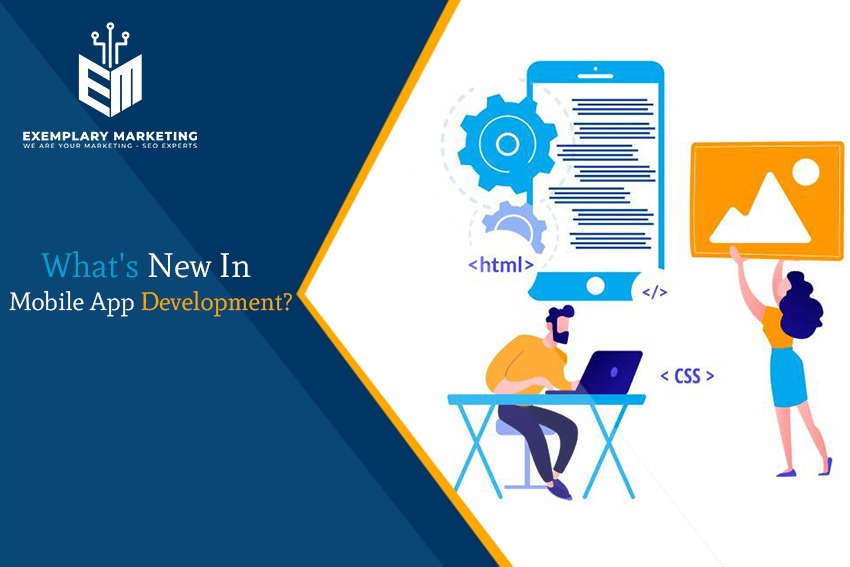In the field of Android app development, it is essential to ensure the functionality and reliability of apps across multiple devices.
Espresso is a powerful framework that allows for efficient UI testing and mobile app testing. Testing is the unsung hero of this scenario. We developers are familiar with the basic features of Espresso. However, the path to mastery requires us to explore advanced techniques which improve testing efficiency and precision.
This blog will guide you through the complex world of advanced Espresso techniques for mobile app testing. We will explore the basics and nuanced methods enabling developers to create comprehensive and reliable testing that ensures their Android apps meet the highest quality standards.
What is Espresso Testing?
Espresso testing is widely used to automate user interface (UI), tests for Android apps. Espresso was developed by Google to make it easier to create reliable and efficient UI test. One of its key features is automatic synchronization to the app’s UI Thread, which prevents synchronization problems and ensures stability.
Espresso’s API is easy to understand and read, and it provides a simple and clear way of writing tests. It is crucial to asynchronous operations because it can wait for UI elements that appear or change. The framework uses matchers in order to find UI elements, and then perform actions such as clicking on buttons or typing text.
Espresso facilitates intent-verification, which allows developers to test interactions among different components and activities within an application. Espresso, which is integrated seamlessly into Android Studio by default, is a powerful tool for Android developers who want to build high-quality Android apps with robust UI testing.
Why Espresso is The Preferred Choice For Android Testing?
Espresso is the most popular Android testing tool due to its unique advantages. Espresso addresses the challenges that arise when developing mobile applications.
The automatic synchronization of the UI thread with Espresso eliminates synchronization problems, ensuring reliability in tests. The expressive and readable framework syntax simplifies the creation of tests, which fosters better collaboration between development and testing teams. Espresso’s automatic wait mechanism is essential for handling asynchronous tasks, and contributes to the creation of reliable tests.
Developers can streamline the testing process by using efficient UI matchers. Support for intent verification allows thorough testing of interactions among different app components. This enhances the overall coverage.
Espresso’s seamless integration into Android Studio simplifies the setup and execution of tests, integrating them with the development workflow.
Espresso is designed specifically for functional tests. It focuses on verifying an app’s behavior in the user interface, which makes it especially effective for scenarios that place a high priority on the end-user.
Espresso’s focus on maintainability, speed and an active developer community solidify its position as a valuable Android application testing tool.
Advanced Espresso Techniques for Android Testing To Follow In 2024
1) ViewModel and LiveData Integration
Integrating LiveData and ViewModel in Android development creates a robust architecture to manage UI-related information. ViewModel is a component that has a strong lifecycle awareness. It stores and prepares the data for the UI. This ensures persistence by allowing configuration changes.
LiveData is an observable data holder that notifies UI elements of changes. This allows for automatic updates as the underlying data changes. Integrating ViewModel with LiveData allows developers to separate UI logic from data logic clearly.
LiveData communicates changes made to the UI by LiveData while ViewModel orchestrates all data operations. This architecture improves testability by enabling independent unit business logic tests in the ViewModel and simplifying UI Testing through LiveData’s observation mechanisms.
2) Mocking Data
It is important to mock data, especially during software testing. The process involves simulating real-world interactions and scenarios within an application.
Developers use mocking frameworks and tools to create artificial data that mimics the behavior or components of real services or components. This creates controlled testing environments, allowing specific scenarios to be examined without relying on external dependencies.
Using techniques such as data mocking, developers can validate the functionality and isolate components for testing. This improves the reliability and efficiency of the testing process.
3) Custom Matchers for UI Testing
Custom matchers are crucial to the readability and expressiveness of UI tests in Android development. Custom matchers, available in Espresso, a popular test framework, allow developers to specify their own criteria when matching UI elements. This makes assertions of tests more intuitive.
Developers can easily create tests that accurately reflect expected behavior by tailoring matchers according to application requirements.
Custom matchers allow a more descriptive and contextual approach to validating UI elements. This improves maintainability but also helps identify issues. Custom matchers are a powerful tool for UI testing, making Android testing more adaptable.
4) Handle Asynchronous Operations Effectively
Modern software development relies on the ability to handle asynchronous operations effectively. This ensures that applications are responsive and user-friendly. Adopting strategies for managing these processes in Android testing, where many operations are performed asynchronously, is essential.
Using tools such as Idling Resources, developers can gracefully sync the timing of tests with the completion asynchronous tasks. This prevents race conditions and flawed test results.
Asynchronous operations must be managed correctly to ensure that tests are reliable and application behavior is accurately validated.
Callbacks, Promises, or Kotlin’s coroutines are all techniques that can be used to optimize asynchronous code. This will improve the robustness and efficiency of Android applications both during development and testing.
5) Espresso Intents for External Component Testing
Espresso Intents are a great way to test external components in Android apps. This functionality allows developers to verify interactions with external components, such as launching activities or handling implicit intentions.
Espresso allows developers to verify the behavior of their app by capturing these intents and stubbing them. This is especially useful when apps communicate with other activities or components of the Android system.
Espresso Intents allows developers to simulate different interaction scenarios. This ensures their applications can handle external events robustly and maintain desired functionality. This approach facilitates more thorough testing and helps identify potential issues related to external component interactions.
6) Cross-App Testing
Cross-app testing using advanced Espresso techniques on Android involves evaluating the seamless interaction between different applications. This is important when an app must communicate with external components or initiate other activities.
Espresso advanced testing can simulate different scenarios using custom matchers and intents. These tests are carefully designed to ensure that Android applications interact with external modules, such as system components or third-party apps, in a robust manner.
This method contributes to an overall testing strategy by identifying issues with cross-app interaction and ensuring that the user experience is consistent across different application boundaries.
7) Parameterized Testing
The use of parameterized testing in software development is powerful and includes advanced Android testing using Espresso. Parameterized testing is a powerful technique in software development. It allows developers to create and run a single test using different parameters.
Espresso allows you to test different scenarios with one generalized method. This method increases code efficiency by reducing redundancy and making updating and maintaining tests easier.
Developers can make their Android apps robust and capable of handling a variety of scenarios by systematically changing input parameters. Parameterized tests help to provide a more comprehensive test coverage and identify potential issues in different use cases.
8) Continuous Integration (CI) for Testing
Continuous Integration (CI), used for testing, is a key practice in software development today. This includes advanced testing using Espresso with Android applications. CI is the process of integrating code changes in a shared repository on a regular basis and then immediately automating testing.
In Android development, CI can be configured to run Espresso tests every time a code updates. It ensures that any new code modifications or additions do not cause regressions and existing functionality to be broken.
Integrating CI into testing workflows allows developers to catch issues early on in the development cycle and fix them, resulting in a robust and reliable codebase. This approach accelerates feedback loops and promotes collaboration and confidence in the software being developed.
9) Espresso Test Recorder
Espresso Test Recorder simplifies the creation of UI tests for Android applications. Espresso Test Recorder, integrated into the Android Studio IDE, allows developers to generate Espresso test codes automatically by recording their interactions within the app’s UI. This visual approach eliminates manual coding for UI tests. It is especially accessible to developers with little testing experience.
Espresso Test Recorder is not a complete testing tool, but it’s a great starting point to create a foundational UI test. The Espresso code generated can be customized and extended to meet more complex testing needs. This allows for a balance of automation and flexibility when testing Android applications.
10) Testing Variations with Test Rules
Test Rules are a key part of Android’s advanced testing methodology. In espresso testing, Test Rules allow developers to define custom conditions or behavior before and after test execution. Test Rules allow developers to set up testing environments, control prerequisites, and maintain consistency across scenarios.
This approach increases tests’ modularity and flexibility, making it easier to adapt to different conditions and configurations. Test Rules are a structured method of managing test variations.
Whether modifying system settings, injecting dependencies, handling specific scenarios, or manipulating specific scenarios, Test Rules contribute to a more comprehensive and adaptable testing suite for Android applications.
Final Words
When we talk about mobile app testing, advanced Espresso techniques significantly elevate the efficiency and effectiveness of Android testing, ensuring robust and reliable applications.
Techniques such as ViewModel and LiveData integration enhance testability and maintainability by separating UI logic from data management.
Mocking data and custom matchers streamline testing processes, allowing developers to create controlled environments and expressively validate UI components. Handling asynchronous operations with precision prevents test flakiness and ensures accurate validation of application behavior.
Leveraging Espresso Intents for external component testing and exploring cross-app testing methodologies contribute to comprehensive test coverage.
Parameterized testing and incorporating Continuous Integration (CI) practices enable systematic and automated testing across varied scenarios.
Tools like Espresso Test Recorder also provide a user-friendly entry point for generating foundational UI tests. Lastly, Test Rules offer a structured approach to testing variations, enhancing adaptability and modularity.
By integrating these advanced Espresso techniques, developers can navigate the complexities of Android testing with finesse, delivering high-quality applications that stand up to diverse real-world scenarios.






